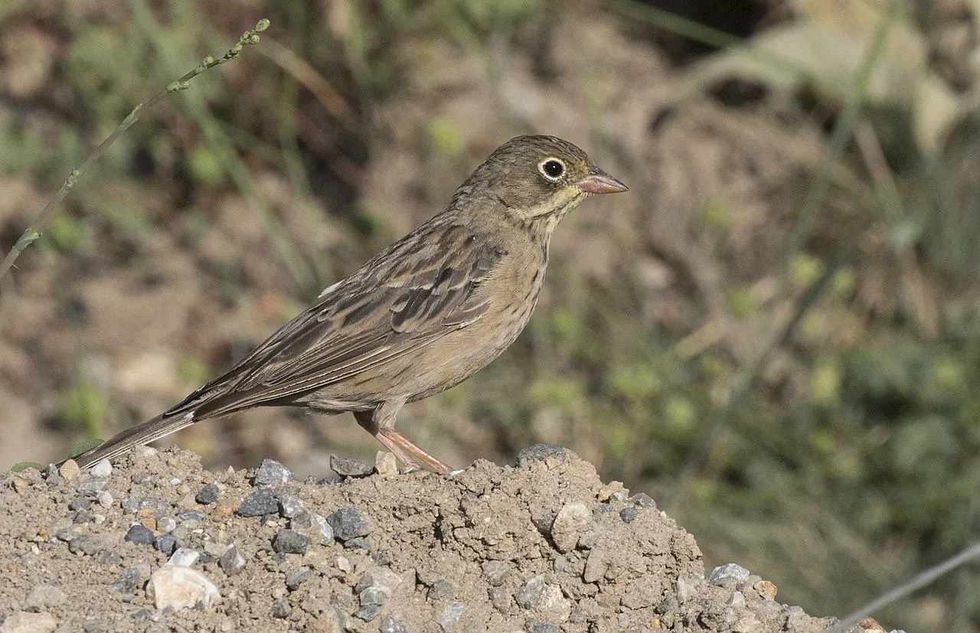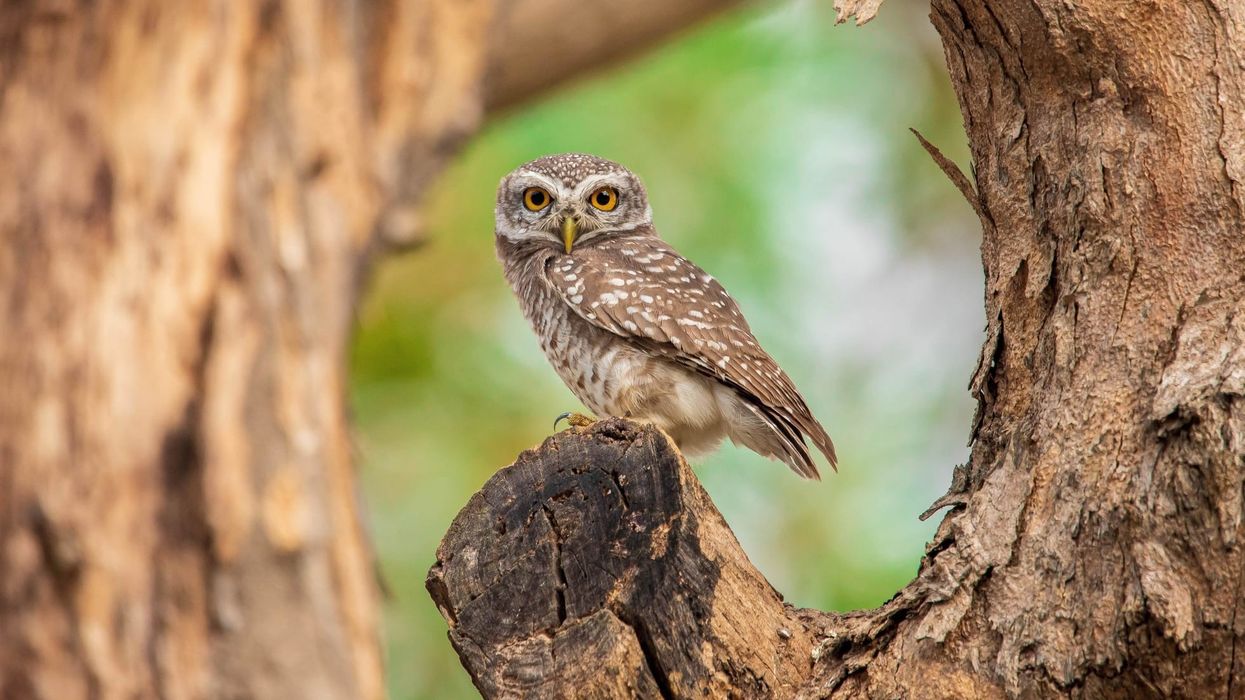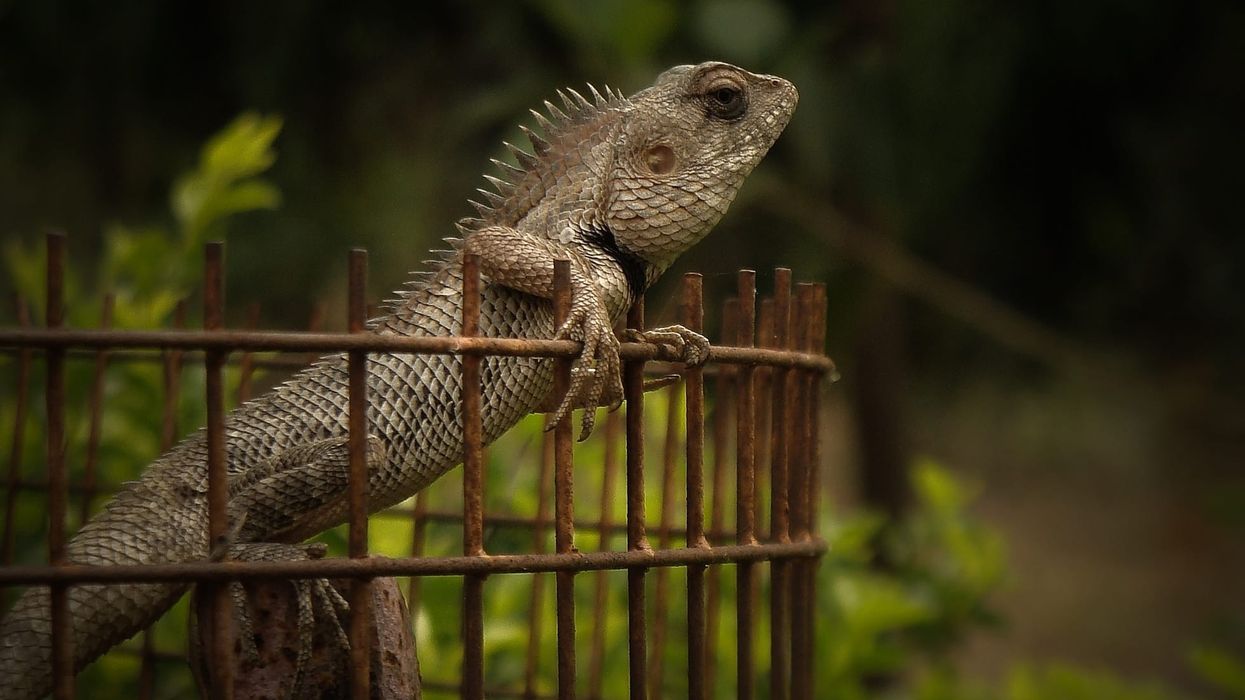Ortolan buntings are small songbirds belonging to the family Emberizidae. They are found across Europe, Africa, and Asia. They are about six in long and weigh less than an ounce. They tend to resemble their relative, the yellowhammer. However, it has a greenish or gray-colored crown that sets it apart.
The ortolan bunting is a very controversial species. The reason behind this statement is the fact that it is considered a regional delicacy by French chefs.
This songbird is known to be cooked and eaten in Armagnac brandy. This culinary tradition is regarded as a cruel and shameful act.
The norm dictates that diners cover their heads to savor its flavors or metaphorically shield themselves from god. You might wonder what instills shame in the eaters and why it deserves the tag- cruel.
Critics often point towards the process of preparing this meal more than the act of eating it. The hunters capture the birds which are then kept in the dark for days. The absence of light forces the songbirds to gorge on seeds, grapes, and other material increasing their size two times.
Once they get fat, the dish is marinated in Armagnac- a type of brandy. The meal is required to be eaten feet first up to the head by holding it from its beak.
This also means eating its bones and fat. Perhaps that is why the diners shield themselves.
Read on to know about controversial delicacy, laws about its capture, and other features about this bird. If you like reading this article on Ortolans, do give the following a try: house finch facts and hooded merganser facts.
Ortolans Interesting Facts
What type of animal is an ortolan?
The Ortolan bunting is a small songbird. Songbirds belong to the suborder Passeri. About 5000 species lie under this category. These populations of birds can be found across the world.
What class of animal does an ortolan belong to?
The ortolan bunting (Emberiza hortulana) belongs to the class Aves of the Animalia kingdom.
How many ortolans are there in the world?
According to the IUCN Red List estimate, the number of mature birds in 2016, was 8,000,000-17,999,999. It was also reported that their population trend is decreasing.
Where does an ortolan live?
This bird is found in Europe, Asia, and Africa. In Europe, it covers many countries including Spain, France, Israel, Greece, and Turkey.
Its range goes eastwards covering the countries of Iraq, Iran, Mongolia, Ukraine, and Russia. During its migration, it is conjectured that these birds take shelter in mountainous regions along the Sahara borders. It was once spotted in India by a birdwatcher, in 2018.
What is an ortolan's habitat?
The Ortolan bunting prefers a climate with a large amount of sunshine and low rainfall. The birds prefer open lands for feeding and foraging.
As it is found in a wide range of lands, its habitat tends to vary. It can be found in open cultivation or forest clearings but not near coastal regions or thick forest areas. After migration, it has been found in semi-arid climates during winters in Mongolia and in the grasslands of West Africa.
It can be found at different altitudes ranging from 2624-9842 ft (800-3000 m). Ideal lands for breeding consist of slightly wooded plains or mountains.
Who do Ortolans live with?
Ortolans are mostly solitary. Small groups are formed in the breeding season at important feeding zones. However, during the autumn migration, they form large flocks and congregate at various African sites, and remain together throughout the winter.
How long does an ortolan live?
This bird's lifespan is recorded to be about six to seven years.
How do they reproduce?
Ortolan birds reproduce in April - June, after their wintering in Africa. They are known to form monogamous pairs for each season. Nests are built on grounds in the open fields.
The female lays four or five eggs at a time. The eggs are described as glossy and pale marred with rings of dark spots. The incubation period is for 11-12 days.
The chicks are tended by both males and females. Protein sources such as tiny invertebrates like ants and beetles are eaten during this period. After 12-13 days, the chicks fledge their nests.
What is their conservation status?
According to the IUCN Red List, it has been categorized as Least Concern. However, its European population is decreasing. In 1979, the European Union declared it a protected species. In 1999, the act of hunting was banned by the French.
Ortolans Fun Facts
What do ortolans look like?
An ortolan is a tiny stocky bird with a small bone structure. Being of just 6.2-6.7 in (16-17 cm) in length with a wingspan of 9-11 in (23-29 cm).
It has a grayish head, a dull yellow color on its throat, and brown feathers with black stripes. It has medium-lengthed pink feet and a light pink bill. It has a subtle sign of variation across different populations.
Males and females mostly tend to be similar in outlook. During autumn, after the breeding season, the males have some tropes on the crown and colorful underparts.
The young ortolan bunting has light brown color on its lower body and is more heavily streaked across its body.
How cute are they?
The ortolans are very cute because of their small structure and rumpled crown.
How do they communicate?
Ortolan uses different calls to communicate. It tends to sing from treetops or the top of the bushes. Its song is five to six notes long and differs across the populations in various habitats. Its flight call is a two-syllable 'tsleeu', or 'schor chu', 'quip', or 'pwit'. They also use visual and acoustic channels of perception.
How big are Ortolans?
These birds are tiny. They are 6.2-6.7 in (16-17 cm) in length with a wingspan of 9-11 in (23-29 cm). If compared to an American crow, it would be 2.5-3 times smaller.
How fast can an ortolan fly?
Despite being tiny birds, they cover large distances to migrate. Data suggests that they have an average speed of 70 mph (114 km/day) and 98 mph (158 km/day) during autumn and fall migration, respectively.
How much does an ortolan weigh?
It is a bulky bird weighing 0.5-0.9 oz (17–28·1 g), which is relatively high for its size.
What are the male and female names of the species?
A male ortolan is called a cock and a female ortolan is referred to as a hen.
What would you call a baby ortolans?
The young Ortolan bunting is called a chick.
What do they eat?
The ortolan bunting is omnivorous by nature. It feeds on insects such as beetles, ants, and grasshoppers. But its primary diet is based on seeds. It looks for food on the ground, in bushes, and in the canopy of trees. It forages for food in small groups when migrating.
Are they dangerous?
No, ortolans are not predatory by nature and just tend to eat the insect population and seeds.
Would they make a good pet?
No, ortolan species have their cycles of the natural order which can only be performed in the wild. It is illegal for hunters to catch these birds.
Did you know...
The ortolan dish has been enjoyed historically, as a French delicacy by aristocrats and gourmands. Its intriguing nature attracts a lot of attention from different creators. It was featured on the show 'The Billions'.
It even made a cameo in 'Hannibal'. However, it can be presumed that the cast did not eat the real dish. This presumption is based on the fact that eating ortolans is illegal.
In 1979, the European Union pronounced ortolans a protected species. After 20 odd years in 1999, France banned it as well. However, illegal and special dinner parties are still hosted to enjoy this traditional dish.
In 2008, a writer from Esquire magazine attended one such party to write an article on it. The writer described the difficulty with which the chef was able to prepare this dish; due to lack of availability.
Michelin-starred chefs, Guerard and Alain Ducasse have even tried to even legalize their hunting and asked permission to preserve this French delicacy. However, their efforts went in vain.
Despite the restrictions, illegal hunting has been reported in large numbers. Capturing 30,000-300,000 birds from southwestern France has been reported. According to French conservation researcher, Frederic Jiguet, if this trend of illegal hunting continues, these birds are liable to be extinct.
Jiguet bases this prediction on the data received on its declining population. His research on the declining trend puts forth strong arguments to ban these illegal trades.
Habitat fragmentation and climate change have already made this population vulnerable. Jiguet also proposes cutting the hunting population to half. Even this small measure would be a massive step towards its conservation.
Are ortolans endangered?
According to the IUCN Red List, the population of the ortolan bunting is decreasing, specifically in the European range. The major threat to this species is the shifting agricultural trends.
An increase in agricultural activity has not only decreased its habitat but also increased the use of pesticides and insecticides. This leads to the shrinking of areas used for foraging (finding food to eat) and breeding.
How many eggs does an ortolan lay?
An ortolan generally lays a clutch of four or five eggs. These are pale blue or pink, covered with dark spots creating rings around the larger end.
Here at Kidadl, we have carefully created lots of interesting family-friendly animal facts for everyone to discover! Learn more about some other birds from our black-throated loon interesting facts and giant cowbird facts pages.
You can even occupy yourself at home by coloring in one of our free printable Ortolan coloring pages.










